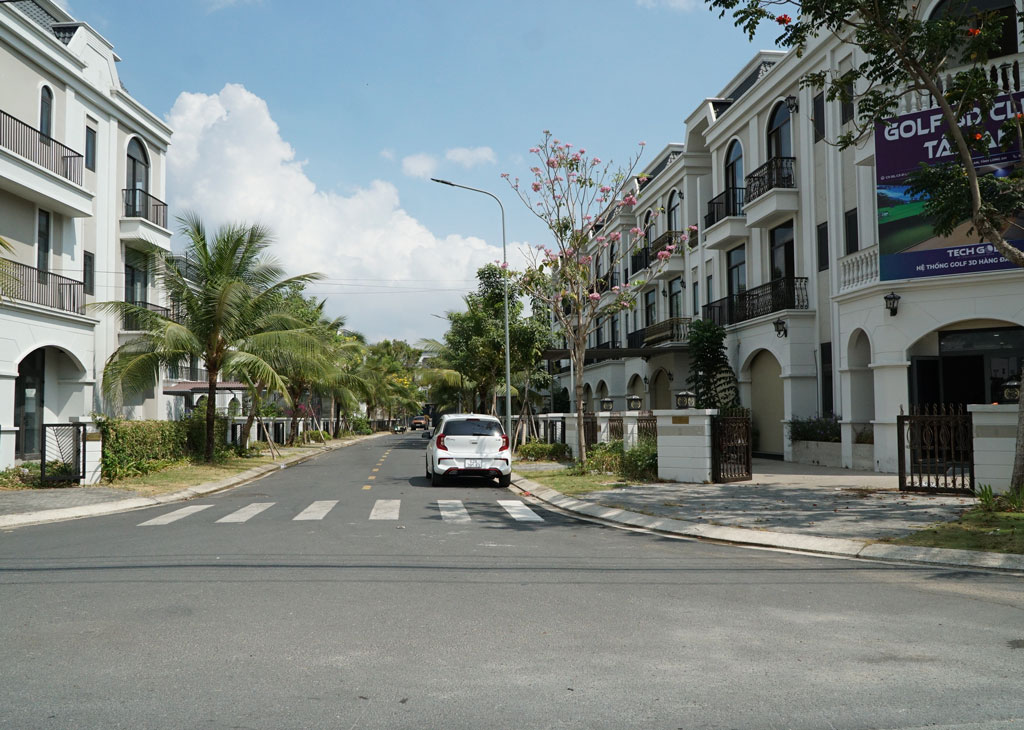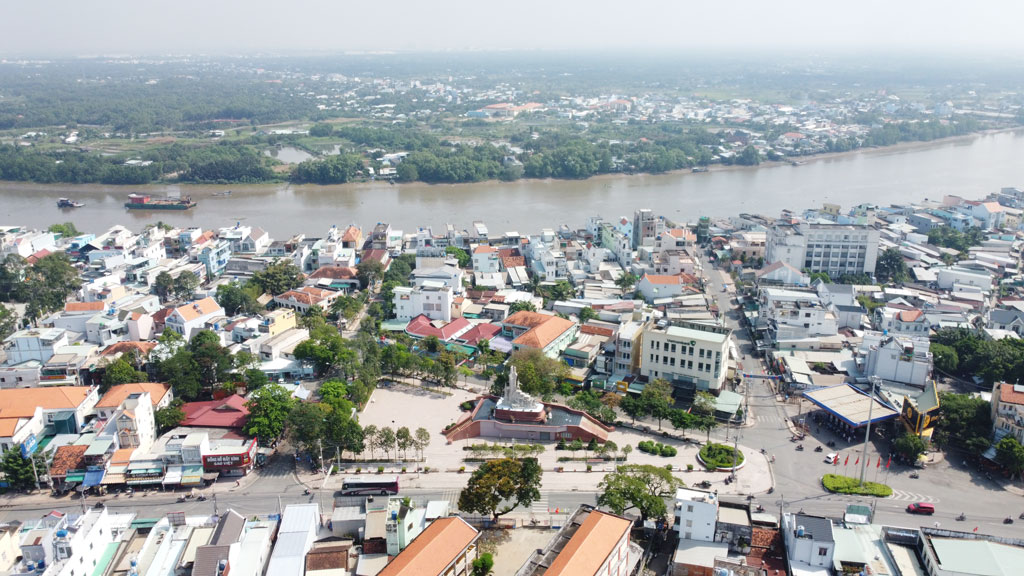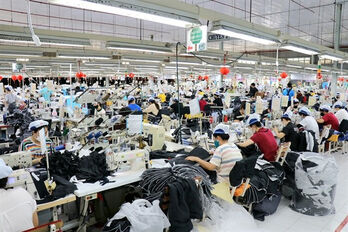Urban development program
Recently, the province's economic structure has shifted strongly towards industry, trade and services. The formation and development of industrial zones and clusters promote the process of urbanization and population concentration, contributing to the expansion of existing towns and cities and the creation of many new urban residential areas.
In 2011, the province built and implemented the Urban Development Program with many important special tasks. Up to now, the construction sector has gradually made efforts to carry out assigned tasks: Urban development program until 2030; submiting for approval urban development programs for districts; coordinate with Tan An City to pilot the Smart Urban Project; etc.
.jpg)
The urban appearance in the province is gradually changing (Photo: Tan An City prioritizes developing into a smart urban area)
Director of the Department of Construction - Nguyen Van Hung said that up to now, the appearance of urban areas in the province has changed clearly. Many projects have been invested and built, creating new spacious, clean and beautiful landscapes, contributing to local socio-economic development and improving people's lives.
.jpg)
Ben Luc district is identified as an important satellite urban area of Ho Chi Minh City
The province currently has 15 administrative units (13 districts, 1 town, 1 city); 9 urban areas: 1 class II urban area (Tan An city); 1 class III urban area (Ken Tuong town), 5 class IV urban areas (Hau Nghia, Ben Luc, Can Duoc, Can Giuoc, Duc Hoa); 12 class V urban areas (Tan Hung, Vinh Hung, Tan Thanh, Thanh Hoa, Thu Thua, Tan Tru, Tam Vu, Dong Thanh, Hiep Hoa, Binh Phong Thanh, Rach Kien and Long Duc Dong urban areas). In particular, Tan An City is the political, administrative, economic, cultural, scientific - technical center, and traffic hub of the province; Kien Tuong town is the central urban area of the province's Dong Thap Muoi region; Hau Nghia, Duc Hoa, Ben Luc, Can Duoc, Can Giuoc urban areas belong to the key economic region of the province and the area bordering Ho Chi Minh City.
According to People's Committee of Kien Tuong town, the locality is currently a class III urban area. In the period 2023-2030, Kien Tuong plans to develop the urban architectural space to become the central urban area of Long An's Dong Thap Muoi region, worthy of its location and potential; At the same time, 2 to 3 urban areas will be built to meet urban standards according to regulations. The town will also exploit resources and favorable conditions to attract investment to develop infrastructure systems connecting urban networks inside and outside the province; harmoniously combine renovation and construction of new urban areas and town development according to national strategies on green growth and urban development to respond to climate change; etc.
| The province is striving to have 27 urban areas: 1 class I urban area (Tan An city), 1 class II urban area (Kien Tuong town), 3 class III urban areas (Ben Luc, Can Giuoc, Duc Hoa), 9 class IV urban areas (Can Duoc, Dong Thanh, Tan Hung, Vinh Hung, Tan Thanh, Thanh Hoa, Thu Thua, Tan Tru and Tam Vu), 13 class V urban areas (Rach Kien, Long Cang, Long Huu Dong, Long Trach, My Quy Tay, Binh Hoa Nam, Hung Dien B, Khanh Hung, Thai Binh Trung, Binh Phong Thanh, Hau Thanh Dong, Tan Long and Lac Tan) by 2030. |
Urban development orientation

In the province, many new urban areas have been formed
Besides the achieved results, the Department of Construction assessed that the province's urban development still has some difficulties and limitations. That urbanization rate is still low compared to the national average; Although the appearance of urban areas has improved, it still does not have its own identity; The quality of urban areas in the province is generally not good; Criteria for per capita income, population growth rate, urban population, population density, average area of housing, traffic land, and green land are still low. The system of social infrastructure is also lacking. Most urban areas do not have wastewater collection and treatment systems. Digital technology has not been applied to develop smart urban areas. State budget capital for urban development investment is limited. Mobilization of non-budget capital sources for investment in urban development has been implemented recently, but has not met the requirement, etc.
According to Mr. Nguyen Van Hung, the province is focusing on investing in construction, completing the criteria for upgrading existing urban areas, forming and developing new urban areas in the direction of modern, green, smart and rich in identity.
By 2030, urban areas in the province will develop sustainably according to the goals: Accelerating the speed and improving the quality of urbanization, developing sustainable urban networks, forming a number of dynamic urban areas connecting with the region, the country and the world.
The urban infrastructure, especially the framework technical infrastructure and essential social infrastructure, is built and developed synchronously and modernly. The urban area's economy grows rapidly, effectively and sustainably. The quality of life in urban areas is high, ensuring basic needs for housing and social infrastructure for urban residents. Modern, green, smart, and rich urban architecture with unique cultural elements are preserved and promoted.
Besides, the formation and development of the urban system in the province must follow planning, meeting the requirements of sustainable urban development; ensuring implementation of the proposed roadmap according to the Provincial Planning orientation recently approved by the Prime Minister.

Can Giuoc district is oriented towards a class III urban area
According to the Provincial Plan, by 2030, the urbanization rate of the province will be about 55%, class III urban areas (Ben Luc, Can Giuoc, Duc Hoa) must ensure completion of urban classification criteria in terms of infrastructure, especially infrastructure for healthcare, education and urban-level cultural works. Localities must develop mechanisms and policies to promote the development of a harmonious urban system, consistent with the potential and advantages of each urban area, economically and effectively use land, and strongly develop urban areas: Ben Luc , Can Giuoc, Duc Hoa (adjacent to Ho Chi Minh City), expand the boundaries of existing urban areas that do not meet area standards./.
|
Tan An City is currently a class II urban area, on a journey to become a class I urban area with the general goal: Building and developing the city to become one of the smart, modern, intelligent ecological and cultural urban centers, become a highlight in the Mekong Delta region; worthy of being the political, administrative, economic, cultural, scientific and technical center of the province; strive to basically achieve the criteria for a class I urban area by 2025, and be recognized before 2030.
Recently, the city has prioritized developing into a smart urban area, closely linked with the development of Tan An City to become a connecting area between Ho Chi Minh City and the Mekong Delta region according to the approved plan, including the Smart Operation Center project to be completed and put into operation. This is the first step in implementing the construction of Tan An to become the province's first smart city; At the same time, it is also the basis for Tan An to develop digital government, digital economy, and digital society. Currently, the city has been integrating monitoring services such as: monitoring security and order, traffic safety; smart lighting; public administration supervision, socio-economic indicators; etc.
Regarding the city's development planning orientation, it is necessary to ensure a natural area of 150km2 or more, with priority given to urban spread in the Southeast direction associated with the Southern development corridor, taking the Vam Co Tay river route as the main landscape axis and taking Tan An City Ring Road as the driving force axis; implementing harmonious and multi-center urban development planning, maintaining the unique river landscape and forming new urban areas;, continuing to exploit the East-West corridor connection, forming a link between urban areas combined with administrative boundary research, ensuring compliance with the Resolution of the National Assembly Standing Committee”.
Chairman of Tan An City People's Committee - Vo Hong Thao
To date, Can Giuoc district has 2 urban areas (1 type IV urban area - Can Giuoc town recognized in 2015 and 1 type V urban area - Long Duc Dong urban area recognized in 2021). According to the plan, the district will be a key urban area in the Southern Key Economic Region, with a role in supporting and reducing population growth pressure in Ho Chi Minh City; At the same time, it is a driving force for socio-economic development in the Eastern region and the entire Long An province. According to the province's orientation, the district strives to form Can Giuoc urban area throughout the district by 2025 (at grade III urban level); By 2030, Can Giuoc City will be established under the province."
Chairman of Can Giuoc District People's Committee - Nguyen Anh Duc
|
By Thanh Nga - Translated by Q. Thien
Source: https://baolongan.vn/huong-den-do-thi-xanh-thong-minh-a174919.html
 Ministry proposes centralised platform for electronic labour contracts
Ministry proposes centralised platform for electronic labour contracts

.jpg)
.jpg)



